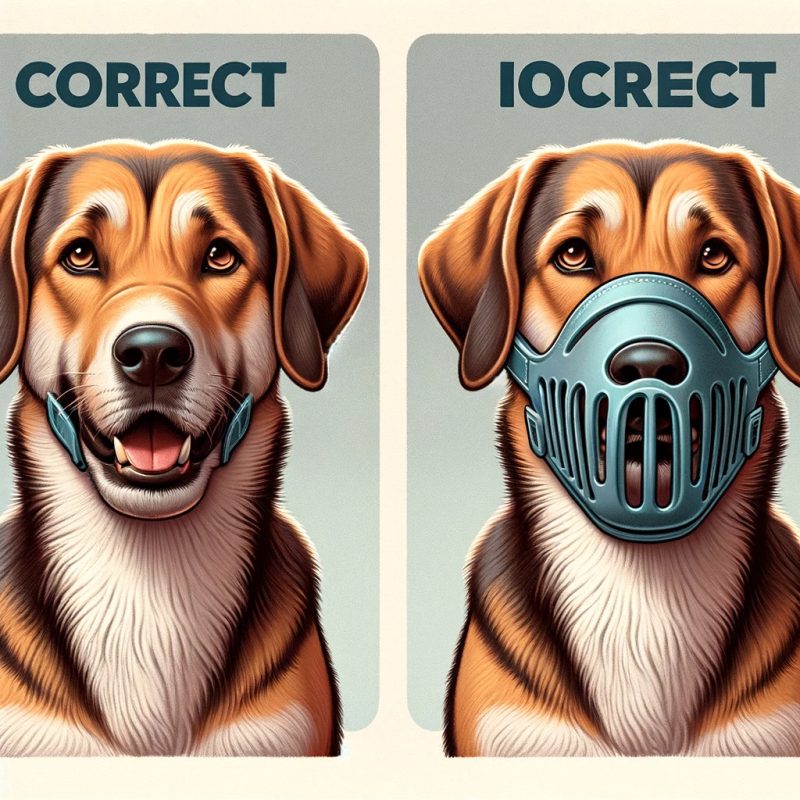Muzzles have long been a topic of discussion among dog owners, often seen as a controversial and misunderstood tool in canine behavior management.
This comprehensive guide aims to demystify the use of muzzles, emphasizing their role as a last resort rather than a first-line solution.
When is a Muzzle Appropriate?

The primary use of a muzzle is in situations where a dog exhibits aggressive tendencies or a propensity to bite.
This is particularly crucial in scenarios where your dog is interacting with other dogs or people.
It’s essential to understand that a muzzle is not a universal solution for behavioral issues but rather a protective measure in specific circumstances.
The Misconceptions Surrounding Muzzle Use

A common misconception about muzzles is their role in everyday dog activities.
It’s startling to see how frequently dog forums and online communities suggest muzzles for various behavioral issues.
However, it’s crucial to recognize that muzzles can induce discomfort and anxiety in dogs, making them unsuitable for addressing general behavioral problems, except in cases of biting risks.
A Tool, Not a Solution

A muzzle should be viewed as a temporary tool, not a permanent fix for behavioral issues.
For instance, if your dog has a habit of picking up harmful objects during walks, a muzzle might seem like an easy fix.
However, this approach overlooks the need for training and behavioral adjustments.
Muzzles can restrict a dog’s ability to pant, which is vital for their comfort and health, especially during physical activities like walking.
The Risks of Misusing Muzzles

The overuse of muzzles, particularly in inappropriate settings such as hot weather, can lead to distress and health risks for dogs.
It’s essential to understand the specific design and purpose of different muzzles and use them judiciously.
For example, while wire muzzles allow for better panting, they are still not a substitute for proper training and control methods.
Alternatives to Muzzle Use

Before resorting to a muzzle, consider alternative methods like different types of leashes and collars, such as gentle leads.
These tools can provide better control during walks without the discomfort or stress associated with muzzles.
Additionally, consulting with a veterinarian or a professional dog trainer can offer tailored advice and solutions for your dog’s specific behavioral issues.
Conclusion: Muzzles as a Last Resort
In conclusion, while muzzles can be a necessary tool in certain situations, they should not be the go-to solution for everyday dog management.
Understanding their proper use, limitations, and alternatives is crucial for the welfare of your canine companion.
If you face persistent behavioral challenges with your dog, seeking professional guidance is always the best course of action.
Seeking Professional Advice
If your dog exhibits behaviors that you find challenging to manage, it’s advisable to consult with your veterinarian.
They can provide guidance or refer you to a qualified dog trainer who can offer more specialized assistance.
Remember, a muzzle is a stop-gap measure, not a long-term solution.
Your goal should be to address the underlying behavioral issues through appropriate training and guidance.
from WordPress https://ift.tt/tjGUl4R
